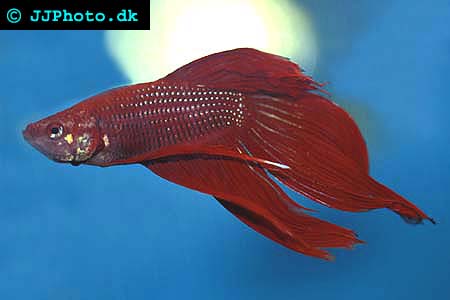I have found a few articles on this matter ,pay close attention here to keep your friend healthy

ish
Body Rot is easily confused with Fin Rot because they share similar names.
The fact of the matter is they are quite different. Fin rot is caused
by a bacteria called “Pseudomonas” and is an external primary disease
caused by stress and poor water conditions. Body rot is caused by a
bacteria called “Aeromonas” and is internal rather than external. This
makes it much harder to diagnose. It is also a secondary disease meaning
it primarily occurs in the presence of illness.
Luckily both
fin rot and
body rot are
gram-negative,
rod-shaped, bacteria meaning they can be treated with the same
medications. This helps if you are unsure of which bacteria is infecting
your betta fish and whether or not you are dealing with both types at
once. To read more on fin rot, click here:
Betta Fin Rot
Body Rot – Aeromonas

(click to enlarge)
Body rot is caused by a bacteria called
Aeromonas
which is a negative-gram, rod-shaped bacteria. Body rot is a secondary
condition, meaning it infects only sick betta fish. Aeromonas very
rarely infects healthy fish. This is because Aeromonas is always present
in your tank and will only infect your fish when its health has already
been compromised. However, in rare cases, it can be a primary infection
caused by the consumption of tainted food.
What causes body rot? When stress and poor water
conditions exist in a betta’s environment, the immune system weakens and
mucus lining thins. This leads to stress and illness in your betta
fish. Aeromonas waits for the perfect opportunity to jump in and join
the party once a disease has set in. The bacteria will get into the
blood stream and travel to the first organ it can find to infect. It
releases Aerolysin Cytotoxic enteroToxins(ACT) which causes inflammation
and hemorrhaging.
So how will you know if your betta fish has body rot?

(click to enlarge)
A body rot infection can be hard to diagnose because the infection is
primarily internal and there are many different species of Aeromonas.
However the most common symptoms are ulcers, hemorrhaging around the
gills or at the base of fins.
fin rot, swollen abdomen, protruding eyes and scale loss.
Treatment of Body Rot
It is important to know that this disease is immune to many
antibiotics and water conditions which includes varying temperatures. An
immediate
water change(click here for bowls:
water change)
is crucial and the treatment of underlying conditions. Once you have
your betta bowl(or aquarium) water stable you must treat your betta fish
for any primary diseases. This would be likely to include a
parasitic infestation.
Once you have pin pointed the original disease and have completed
treatment, your betta should be able to recover. If not you can treat
the actual body rot itself. Tetracycline would be best especially if fin
rot or any other bacteria is apparent.
Prevention
It is important to remember to keep up with regular maintenance to
keep your betta healthy. Quality water conditions will prevent many
diseases and keep your betta’s immune system running efficiently. Water
changes can be tedious when you are first starting out. Once you get
into the habit of performing water changes and testing regularly it will
quickly become a normal routine for you.
Here are some resources to help you out:
Clean a Betta Bowl in 5 Easy Steps
How to Clean an Aquarium in 5 Steps
Also you can keep your betta’s water at about 82 degrees and add a
light amount of aquarium salt on a regular basis. I follow this and have
not seen fin or body rot infect my bettas or aquarium fish since 2008.
Do not think of the salt as making the water being “salty”. Think of it
being soft. That is why we have water softeners in our homes and fill
them regularly with salt and yet when we drink we do not taste the salt.
Unless you put too much in of course.
The beautiful Betta is gifted by Mother Nature a body which
not only helps its tough fight other co-occupants around but also take
care of the small fry like a good parent.
The main parts of a Bettas body are -
1. Mouth
2. Eyes
3. The ‘Beard’
4. The Finnage
5. Labyrinth
6. Various Internal organs
1. Betta Anatomy - The Mouth
The jaws of an adult Betta are as impressive or evens more
impression then the jaw of a giant White Shark! The lower jaw of a
Betta has sharp shredding teeth, which can tear of body of brine
shrimps, worms,
mosquito
larvae and other such water organisms. A study reveals that on
proportionate basis to the body size, Betta jaws are bigger and
stronger then those of a White Shark.
Behind the sharp teeth, lies a small place to keep the fries. Male
Bettas are hold the tiny fries in this area and take them to the bubble
nest and safely release them. No fry is hurt by the teeth situated just
millimeters ahead of them.
2. Betta Anatomy - The Eyes
On each side of the head lies a bulging eye. Eyes are protruding and
have black colored iris. The rest of the eye could be of any color. A
Betta cannot blink its eye. The eyes move as per the movement of the
target. The sharp eyesight is one of the prime reasons to explain how
Bettas are highly efficient warriors of their habitat.
3. Betta Anatomy - The “Beard”
A Betta has a membrane under its gill plate cover. The membrane sticks
out when the gills are closed and is seen as a distinct part of the
fish body. It gives a beard like look, hence it is often known as the
Beard of a Betta. For a dark, blue or red colored Betta, this “beard”
would be normally dark. For Bettas with yellow, white or other light
colored bodies, the “beard” would exactly match the body color. When a
Betta opens its gill plates, the protruding membrane would make it look
bigger and hence mightier then it actually is. This would help it
eventually scare away adversaries. In females, this distinct feature is
not clearly visible as compared to their male counterparts.
4. Betta Anatomy - The Finnage
Broad colorful attractive fins form the most visually attractive part
of a Betta’s body. Fins start getting developed from about 8th week of
the birth of a Betta. Bettas younger then 8 weeks have tiny usually
microscopic fins. Around 2 month after their birth, anal fin starts
developing. The caudal and dorsal fins soon follow. The female fin
development stops after a certain period. However studies show that
male fins continue to develop in its entire life span. The fins are a
few cell thick and hence don’t hamper free movement of the fish.
However this frequent movement, diseases often leads to wear and tear
of the fins. The fins due to this tear and drop off. Some varieties of
Betta have the ability to simply drop off an extra large fin. The fin
then again grows and the cycle continues. Every newly developed fin has
a different coloration then the previous one. Bettas with a large
full-developed caudal fin are called Half Moon Bettas due to the shape
of the fine, which resembles a half moon.
5. Betta Anatomy - The labyrinth
Apart from breathing oxygen through its gills, Bettas can breathe air
from the surface of water. This is possible with the assistance of the
organ called Labyrinth.
Labyrinth is located in the gill chamber and above the gill plates. It
has a set of bony plates covered by a membrane. As soon as the air
comes in contact, it is inhaled in. By gaseous exchange, the oxygen is
passed straight to the venous blood in labyrinth and the other waste
contents of the air are exhaled out. However the size of labyrinth in a
Betta is small. Hence it cannot take more amount of oxygen in the one
trip to surface. Hence a Betta makes frequent visit to the water
surface. In shallow waters or water with low amount of oxygen,
labyrinth plays a key part in ensuring that oxygen levels are
maintained in the body of Betta.
If a Betta is kept outside water, it can survive longer then other fishes due to respiration through the labyrinth.
6. Betta Anatomy - Various Internal Organs
The critical organs of the Betta namely, Heart, Stomach, Liver, Spleen,
Brain are situated in the first half of body. This organ can be found
in the belly area of the Betta just before the beginning of the anal
fin. Near the beginning of the anal fin is the anus of the Betta.
Female Bettas have an opening, which looks, like a white spot in this
area. This is used to release eggs during spawning.


 The tragic shooting death of Tejano singer Selena spawned a reaction
within the Latino community that can be compared to the reactions to the
deaths of Elvis Presley and John Lennon. An enormously popular singer
in Latino communities across North America, her music crossed cultural
boundaries to touch the lives of young and old alike. A flamboyant, sexy
stage performer, sometimes hailed as the Latina Madonna, Selena was
nonetheless considered a role model for off-stage she was family
oriented, active in anti-drug campaigns and AIDS awareness programs.
The tragic shooting death of Tejano singer Selena spawned a reaction
within the Latino community that can be compared to the reactions to the
deaths of Elvis Presley and John Lennon. An enormously popular singer
in Latino communities across North America, her music crossed cultural
boundaries to touch the lives of young and old alike. A flamboyant, sexy
stage performer, sometimes hailed as the Latina Madonna, Selena was
nonetheless considered a role model for off-stage she was family
oriented, active in anti-drug campaigns and AIDS awareness programs.




